Are you wondering if Tencel is eco-friendly? Look no further. This article will provide you with a comprehensive analysis of Tencel’s sustainability. We’ll delve into the manufacturing process, sustainable sourcing, energy consumption, water usage, chemicals used, biodegradability, carbon footprint, and social/ethical considerations. By comparing Tencel to other fabrics in terms of sustainability, we’ll help you make an informed decision about its environmental impact. Get ready to discover the truth about Tencel’s eco-friendliness.
Manufacturing Process of Tencel
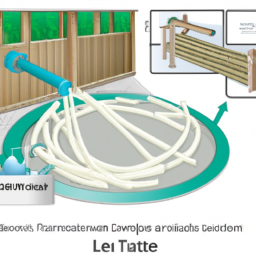
The manufacturing process of Tencel involves using a closed-loop system to recycle and reuse solvents, making it an eco-friendly choice. This closed-loop system is at the core of Tencel’s manufacturing efficiency and waste reduction efforts. By recycling and reusing solvents, Tencel minimizes the amount of waste generated during production.
In this closed-loop system, the solvent used in the production of Tencel is continuously recovered and reused. After each cycle, impurities are removed from the solvent through filtration and purification processes, ensuring its quality for future use. This not only reduces the need for fresh solvents but also minimizes the discharge of harmful chemicals into the environment.
Tencel’s manufacturing process also prioritizes waste reduction by minimizing resource consumption. The raw materials used to produce Tencel fibers come from sustainably managed wood sources, such as eucalyptus trees. These trees require less water and land compared to conventional cotton farming methods.
Furthermore, Tencel’s manufacturing process boasts high energy efficiency levels. Advanced technologies are employed to minimize energy consumption throughout production stages.
Overall, with its closed-loop system for solvent recycling, emphasis on waste reduction, sustainable sourcing practices, and energy-efficient manufacturing process, Tencel stands as an environmentally friendly choice in textile production.
Sustainable Sourcing of Tencel
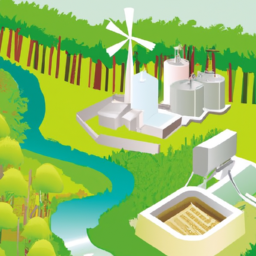
Sourcing Tencel sustainably involves carefully selecting suppliers and ensuring responsible production practices. When it comes to the production of Tencel, sustainable farming techniques are key in minimizing its environmental impact. The primary raw material used in Tencel production is wood pulp, which is derived from trees grown on sustainably managed plantations. These plantations employ sustainable farming techniques that promote forest regeneration and biodiversity conservation.
One of the key aspects of sustainable farming is the responsible use of water. Tencel manufacturers utilize closed-loop systems that recycle up to 99% of the water used in the production process. This not only reduces water consumption but also minimizes wastewater discharge into natural water sources.
Furthermore, Tencel production focuses on reducing energy consumption. The manufacturing process utilizes a solvent spinning method called lyocell, which requires less energy compared to traditional textile manufacturing processes. Additionally, the closed-loop system mentioned earlier helps conserve energy by reusing heat during various stages of production.
Energy Consumption in Tencel Production
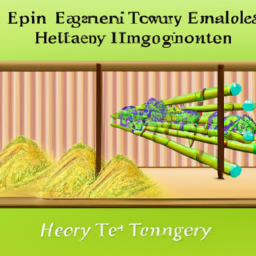
Using closed-loop systems and the lyocell spinning method, Tencel production requires less energy compared to traditional textile manufacturing processes. This energy efficiency is one of the key factors that make Tencel an eco-friendly fabric choice. The closed-loop system in Tencel production allows for the solvent used in the process to be recycled and reused, reducing waste and minimizing environmental impact.
Compared to other fabrics like cotton or polyester, Tencel requires significantly less energy during its production. The lyocell spinning method used in Tencel production involves dissolving wood pulp into a solvent and then extruding it into fibers. This process uses less energy than traditional methods such as weaving or knitting, which require more mechanical steps.
In addition to its energy efficiency, Tencel also has a lower environmental impact compared to other fabrics. The closed-loop system not only reduces energy consumption but also minimizes water usage by recycling and reusing water in the manufacturing process. Furthermore, because Tencel is made from sustainably sourced wood pulp, it does not contribute to deforestation or habitat destruction.
Overall, the combination of energy efficiency through closed-loop systems and the use of sustainable materials makes Tencel a responsible choice for environmentally conscious consumers.
Water Usage in Tencel Production

When choosing a fabric, you’ll be interested to know that Tencel production minimizes water usage through its closed-loop system. Water scarcity is a critical issue facing our planet today, and the fashion industry plays a significant role in this problem. Traditional textile manufacturing processes consume large amounts of water, contributing to the depletion of freshwater resources and exacerbating water scarcity in many regions.
In contrast, Tencel production has made great strides in reducing its environmental impact by implementing a closed-loop system. This innovative process recycles and reuses over 99% of the solvent used, significantly reducing water consumption compared to other fabrics. The closed-loop system captures and treats the water used during production, making it possible to reuse it for future cycles.
The environmental benefits of Tencel extend beyond just minimizing water usage. By using sustainably sourced wood pulp from responsibly managed forests as raw material, Tencel ensures that its production does not contribute to deforestation or habitat destruction. Additionally, Tencel is produced using an environmentally friendly manufacturing process with low emissions and minimal waste generation.
Considering these factors, Tencel stands out as an eco-friendly fabric choice that addresses concerns about water scarcity and reduces its overall environmental impact.
Chemicals Used in Tencel Production
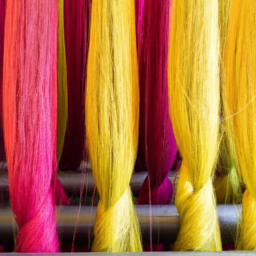
To ensure the safety of workers and the environment, you’ll want to know that the chemicals used in Tencel production are non-toxic and biodegradable. Tencel, a type of cellulosic fiber made from wood pulp, undergoes a closed-loop manufacturing process where almost all chemicals used are recovered and reused. This significantly reduces chemical waste and its impact on both workers and the environment.
One of the key chemicals used in Tencel production is N-Methylmorpholine-N-Oxide (NMMO), which acts as a solvent to dissolve cellulose from wood pulp. NMMO is considered non-toxic as it has low acute toxicity and does not bioaccumulate in organisms. Moreover, it is readily biodegradable, meaning it breaks down naturally without leaving harmful residues behind.
Another chemical commonly used is acetic acid, which helps control pH levels during processing. Acetic acid is widely used in various industries and has minimal environmental impact when properly managed.
Overall, the use of these chemicals in Tencel production has a minimal chemical impact on workers’ health and ensures that any potential environmental impact is minimized. The closed-loop system also emphasizes sustainability by reducing waste generation during manufacturing processes.
Biodegradability of Tencel

If you’re concerned about the environmental impact of clothing materials, it’s important to note that Tencel is highly biodegradable. This means that when you dispose of Tencel products, they will naturally break down and return to the earth without leaving behind harmful waste or pollutants. The biodegradability of Tencel is one of its major benefits from an environmental perspective.
When Tencel garments are composted, they provide several advantages. First, Tencel fibers are made from sustainably sourced wood pulp, which means that when they decompose, they release nutrients back into the soil. This can help improve soil quality and support healthy plant growth. Additionally, because Tencel is a natural material, it can be easily broken down by microorganisms in a composting environment.
Composting also offers another advantage for Tencel garments: it reduces waste in landfills. By choosing to compost your old Tencel clothing instead of throwing them away, you can contribute to reducing the amount of textile waste that ends up in landfill sites each year.
Overall, the biodegradability of Tencel makes it an environmentally friendly choice for clothing materials. Its ability to break down naturally and provide benefits in composting systems sets it apart as a sustainable option for those looking to minimize their ecological footprint.
Carbon Footprint of Tencel
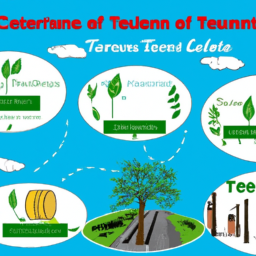
By choosing Tencel, you’re reducing your carbon footprint compared to other clothing materials. Tencel is made from wood pulp, primarily sourced from sustainably managed forests. The production process of Tencel involves using a closed-loop system where 99.8% of the chemicals and solvents used are recycled and reused, minimizing waste and pollution.
In terms of carbon emissions, Tencel has a significantly lower environmental impact compared to other fabrics like cotton or polyester. According to research conducted by the Textile Exchange, producing one kilogram of Tencel fibers results in approximately 2 kilograms of CO2 emissions. In comparison, the production of one kilogram of cotton fibers emits around 16 kilograms of CO2.
The reduced carbon emissions associated with Tencel can be attributed to several factors. Firstly, the cultivation and harvesting of trees used for Tencel requires less water and land compared to growing conventional crops like cotton. This reduces the overall energy required for cultivation and lowers carbon emissions.
Furthermore, the closed-loop production process mentioned earlier also contributes to reducing carbon emissions as it minimizes the use of fossil fuels during manufacturing.
Overall, if you’re looking to reduce your environmental impact and carbon footprint when it comes to clothing choices, opting for garments made from Tencel is a sustainable choice that can make a significant difference in mitigating climate change.
Social and Ethical Considerations in Tencel Production
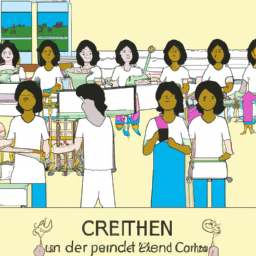
The social and ethical considerations in Tencel production include fair labor practices and responsible sourcing of raw materials. When it comes to fair trade practices, Tencel stands out. The fiber is produced by Lenzing AG, which has implemented a robust set of guidelines to ensure fair treatment of workers throughout the supply chain. These guidelines cover areas such as wages, working hours, and occupational health and safety.
Worker welfare is a top priority in Tencel production. Lenzing AG has established partnerships with local communities where their factories are located, investing in social infrastructure projects that benefit both workers and residents. Additionally, the company actively engages with suppliers to ensure responsible sourcing of raw materials.
In terms of data-driven evidence on these social and ethical considerations, Lenzing AG regularly publishes sustainability reports that provide comprehensive information on their progress. These reports detail key performance indicators related to worker welfare, such as employee turnover rates and training programs offered.
Overall, Tencel production places great importance on fair labor practices and worker welfare. Through its commitment to fair trade practices and responsible sourcing of raw materials, Tencel strives to create a sustainable supply chain that respects the rights and well-being of all involved stakeholders.
Comparing Tencel to Other Fabrics in Terms of Sustainability
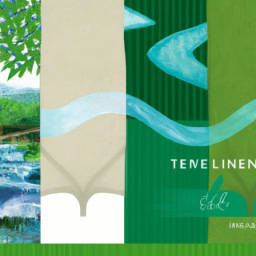
When considering sustainability, you’ll find that Tencel compares favorably to other fabrics. In terms of the environmental impact of production, Tencel stands out for its low water usage and reduced chemical use. The production of Tencel requires significantly less water compared to conventional cotton or even organic cotton, making it a more sustainable choice. Additionally, the closed-loop manufacturing process used in Tencel production ensures that almost all solvents and chemicals are recycled and reused, minimizing waste and pollution.
In comparison to organic cotton, Tencel also proves to be a more sustainable option. Organic cotton may require substantial amounts of water for irrigation, while Tencel is made from sustainably sourced wood pulp using a closed-loop process that minimizes water consumption. Furthermore, the cultivation of organic cotton can result in soil degradation due to monoculture farming practices. On the other hand, Tencel production encourages sustainable forestry practices as it primarily relies on fast-growing eucalyptus trees.
Overall, when assessing sustainability factors such as water usage and chemical pollution in production processes, Tencel emerges as a favorable choice over conventional fabrics like cotton or even organic cotton. Its reduced environmental impact makes it an attractive option for those seeking eco-friendly alternatives in their clothing choices.
Frequently Asked Questions
Is Tencel Made From Natural or Synthetic Fibers?
Tencel is made from natural fibers, specifically cellulose extracted from wood pulp. Unlike synthetic fibers, which are derived from petroleum-based chemicals, Tencel is produced using a sustainable closed-loop process that minimizes environmental impact. This process involves recycling and reusing solvents and water, resulting in minimal waste generation. Tencel’s natural origin combined with its eco-friendly production methods make it a more environmentally friendly choice compared to synthetic fibers in terms of reducing resource consumption and pollution.
What Are the Key Advantages of Using Tencel Fabric?
When it comes to using Tencel fabric, there are several key advantages to consider. Firstly, Tencel is known for its exceptional softness and comfort, making it a great choice for clothing and bedding. Additionally, Tencel has excellent moisture-wicking properties, keeping you dry and cool throughout the day. It is also highly breathable and hypoallergenic, making it suitable for those with sensitive skin or allergies. These advantages make Tencel an attractive option when considering fabrics for various applications.
Can Tencel Be Recycled or Repurposed?
Recycling Tencel and repurposing it are important considerations for sustainability. Tencel, a type of cellulosic fiber, can be broken down and processed into new fibers through mechanical or chemical recycling methods. This allows for the creation of new products while minimizing waste. Additionally, Tencel can be repurposed into various items such as home insulation, packaging materials, or even compost. These practices contribute to reducing the environmental impact of Tencel production and promote a circular economy.
How Does the Cost of Tencel Compare to Other Sustainable Fabrics?
When it comes to the cost of Tencel, it’s important to consider its sustainability as well. Compared to other sustainable fabrics, Tencel may have a slightly higher price point due to its production process and eco-friendly qualities. However, the long-term benefits of choosing Tencel outweigh the initial cost. Its durability and biodegradability make it a worthwhile investment in terms of both quality and environmental impact.
Are There Any Potential Health Risks Associated With Wearing Tencel Clothing?
Potential health risks associated with wearing Tencel clothing are minimal. Tencel is hypoallergenic, meaning it is less likely to cause skin irritations or allergies. It also has excellent moisture-wicking properties, reducing the risk of bacterial growth and odor build-up. In terms of environmental impact, Tencel is considered eco-friendly. It is derived from sustainably sourced wood pulp and manufactured using a closed-loop process that minimizes waste and chemical usage. Overall, Tencel offers a safe and environmentally conscious choice for clothing materials.
Conclusion
In conclusion, Tencel can be considered an eco-friendly fabric based on its manufacturing process and sustainable sourcing. It has a lower energy consumption and water usage compared to other fabrics, making it more environmentally friendly. Tencel also uses fewer chemicals in production, reducing its impact on the environment. Additionally, it is biodegradable and has a lower carbon footprint. Considering social and ethical considerations, Tencel stands out as a responsible choice. When comparing sustainability factors with other fabrics, Tencel emerges as a top contender for eco-conscious individuals.